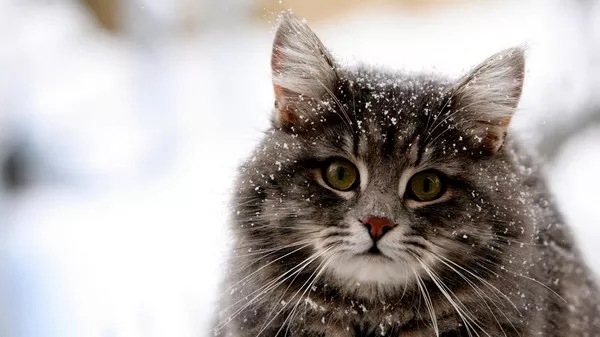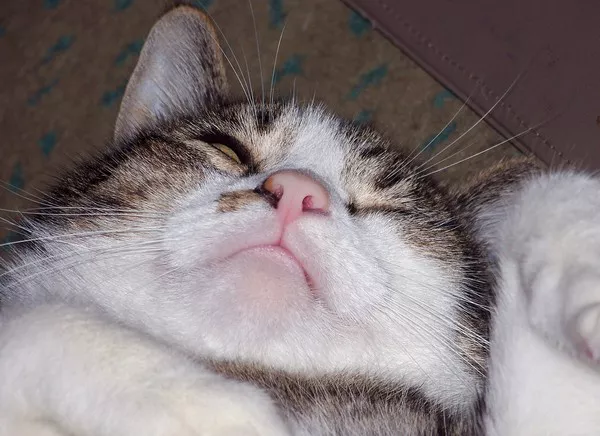Training a cat may not be the first thought that comes to mind when considering pet ownership, as cats are often seen as independent creatures. However, many cat owners have discovered that certain breeds are not only trainable but also thrive on the mental stimulation that training provides. This article delves into the breeds that are considered the easiest to train, exploring their characteristics, training methods, and the benefits of training for both cats and their owners.
Cat Trainability
Before diving into specific breeds, it’s essential to understand what makes a cat trainable. Unlike dogs, cats have a reputation for being more aloof and less eager to please. However, this does not mean they cannot learn commands or tricks. The key factors influencing a cat’s trainability include:
Intelligence: Some breeds are naturally more intelligent, making them quicker learners.
Energy Level: High-energy cats often require more stimulation, which can be channeled into training sessions.
Curiosity: Cats that are naturally curious tend to engage more with training activities.
Motivation: Food-driven cats or those that respond well to play are generally easier to train.
Top Cat Breeds for Training
1. Abyssinian
The Abyssinian is known for its playful and energetic nature. This breed is highly intelligent and enjoys interactive play, making them excellent candidates for training. Abyssinians thrive on mental challenges and are often eager to learn new tricks. Their agility and curiosity allow them to excel in activities like agility training and fetch.
2. Bengal
Bengals are renowned for their intelligence and playful demeanor. They are naturally curious and love to explore their environment. This breed can quickly learn commands and tricks, especially when motivated by play or treats. Bengals enjoy interactive games and can even be taught to walk on a leash, making them a fun and engaging companion.
3. American Shorthair
The American Shorthair is adaptable and easygoing, making them suitable for training. They are intelligent and observant, often picking up on routines and commands quickly. This breed enjoys interactive toys and games, which can be incorporated into training sessions to keep them engaged.
4. Maine Coon
Known as the gentle giants of the cat world, Maine Coons are sociable and intelligent. They tend to form strong bonds with their owners, making them more receptive to training. Their playful nature allows them to enjoy training sessions, which can double as exercise. Maine Coons can learn commands and tricks, and they often enjoy playing fetch.
5. Siamese
Siamese cats are known for their vocal and social nature. They are highly intelligent and curious, making them easy to train. Siamese cats thrive on interaction with their owners and can learn a variety of tricks. They are also known to enjoy leash training, which allows them to explore the outdoors safely.
6. Somali
The Somali cat is energetic and playful, requiring mental and physical stimulation. This breed is intelligent and responds well to training, especially when it involves interactive play. Somali cats can learn tricks and commands quickly, making them a delightful addition to any household.
7. Turkish Van
Turkish Vans are known for their love of water and playful demeanor. They are intelligent and can be trained to perform various tricks. Their energetic nature makes training sessions enjoyable, and they often engage well with their owners during these activities.
8. Cornish Rex
The Cornish Rex is a playful and affectionate breed that enjoys being the center of attention. Their intelligence and eagerness to please make them easy to train. Cornish Rex cats thrive on interactive play, and training sessions can be a fun way to bond with them.
9. Russian Blue
Russian Blues are known for their gentle and affectionate nature. They are intelligent and can be trained to follow commands and perform tricks. This breed often forms strong bonds with their owners, making training a rewarding experience for both.
10. Ocicat
The Ocicat is a playful and energetic breed that thrives on mental stimulation. They are intelligent and can learn various commands and tricks. Ocicats enjoy interactive play, which can be incorporated into training sessions to keep them engaged and motivated.
See Also: 7 Easiest Cat Breeds to Train [Revealed!]
Training Techniques for Cats
Training a cat requires patience, consistency, and positive reinforcement. Here are some effective techniques to consider:
Positive Reinforcement: Use treats, praise, or play as rewards for desired behaviors. This encourages the cat to repeat those behaviors.
Short Sessions: Keep training sessions short and engaging. Cats have shorter attention spans than dogs, so aim for 5-10 minute sessions.
Consistency: Use the same commands and cues consistently to help the cat learn.
Patience: Every cat learns at its own pace. Be patient and avoid punishment, as this can lead to fear and anxiety.
Fun and Play: Incorporate play into training to keep the cat engaged and motivated. Use toys or interactive games to make learning enjoyable.
Benefits of Training Your Cat
Training provides numerous benefits for both cats and their owners:
Mental Stimulation: Training challenges a cat’s mind, helping to prevent boredom and destructive behaviors.
Stronger Bond: Training sessions can strengthen the bond between cat and owner, fostering trust and communication.
Improved Behavior: Training can help address behavioral issues, such as litter box problems or excessive scratching.
Safety: Teaching commands like “come” can enhance a cat’s safety, especially in outdoor environments.
Fun Activities: Training can lead to enjoyable activities, such as agility courses or tricks, providing entertainment for both the cat and its owner.
Conclusion
While all cats have the potential to learn, certain breeds stand out for their trainability. Abyssinians, Bengals, American Shorthairs, Maine Coons, Siamese, Somalis, Turkish Vans, Cornish Rex, Russian Blues, and Ocicats are among the easiest breeds to train due to their intelligence, energy levels, and social nature. By employing positive reinforcement techniques and keeping training sessions fun and engaging, cat owners can enjoy a rewarding experience that benefits both their feline companions and themselves.
Related Topics
























